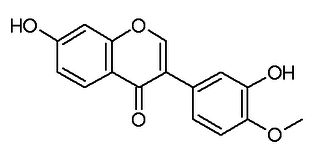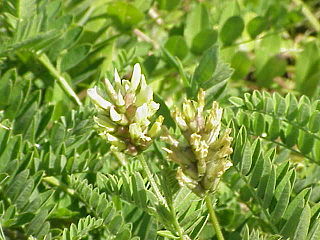
Astragalus is a large genus of over 3,000 species of herbs and small shrubs, belonging to the legume family Fabaceae and the subfamily Faboideae. It is the largest genus of plants in terms of described species. The genus is native to temperate regions of the Northern Hemisphere. Common names include milkvetch, locoweed and goat's-thorn. Some pale-flowered vetches are similar in appearance, but they are more vine-like than Astragalus.

Enteroctopus is an octopus genus whose members are sometimes known as giant octopus.

Soups in East Asian culture are eaten as one of the main dishes in a meal or in some cases served straight with little adornment, particular attention is paid to the soups' stocks. In the case of some soups, the stock ingredients become part of the soup. They are usually based solely on broths and lacking in dairy products such as milk or cream. If thickened, the thickening usually consists of refined starches from corn or sweet potatoes.
Huangqi (Huang-ch’i) can refer to:

Astragalus glycyphyllos is a flowering plant in the family Fabaceae, native to Europe. It is a perennial herbaceous plant which is sometimes used for tea.

Astragalus propinquus (syn. Astragalus membranaceus, commonly known as Mongolian milkvetch in English; 'Хунчир' in Mongolian; huáng qí, běi qí or huáng huā huáng qí, in Mongolia, is a flowering plant in the family Fabaceae. It is one of the 50 fundamental herbs used in traditional Mongolian medicine. It is a perennial plant and it is not listed as being threatened.

Synodontis membranaceus, known as the moustache catfish, is a species of upside-down catfish that is native to northern Africa. It was first described by French naturalist Geoffroy Saint-Hilaire in 1809 as Pimelodus membranaceus, from specimens obtained in the Nile River. The species name membranaceus refers to membranes present on the barbels of the fish.
Hepatoprotection or antihepatotoxicity is the ability of a chemical substance to prevent damage to the liver. This is opposite to hepatotoxicity.
Astragalus anxius is a rare species of milkvetch known by the common names troubled milkvetch and Ash Valley milkvetch. It is endemic to northern Lassen County, California, where it grows in the volcanic soil of the Modoc Plateau. It was formally described in 1992. There are only 6 known occurrences, some of which are threatened by livestock trampling.

Calycosin is an O-methylated isoflavone. It can be isolated from Astragalus membranaceus Bge. var. mongholicus and Trifolium pratense L..
Paraliparis membranaceus is a species of snailfish only known from a single specimen of 57 mm standard length collected in Sarmiento Channel in the fjordlands of southern Chile.

Astragalus cicer, the chickpea milkvetch, chick-pea milk-vetch or cicer milkvetch, is a perennial flowering plant native to Eastern Europe, popularized and subsequently transported to areas in Southern Europe, North America, and South America. Cicer milkvetch exhibits legume-like qualities; the plant produces pods which harbor its seeds. Its flowers are usually of pale yellow tint, and as such, attract bumble or European honey bees for pollination. Growth often exceeds 0.6 meters, up to a height of 1 meter in length.

Astragalosides are a series of related chemical compounds isolated from Astragalus membranaceus.

Scadoxus membranaceus is a flowering plant in the Amaryllidaceae family. It is a bulbous plant from South Africa. The smallest of the species of Scadoxus, it is sometimes cultivated as an ornamental plant where a minimum temperature of 5 °C (41 °F) can be maintained.

Brachytrupes is a genus of mostly African crickets in the family Gryllidae.

Cerianthus membranaceus, the cylinder anemone or coloured tube anemone, is a species of large, tube-dwelling anemone in the family Cerianthidae. It is native to the Mediterranean Sea and adjoining parts of the northeastern Atlantic Ocean.
Lepidus is a genus of extinct coelophysid theropod from the Upper Triassic of the United States. It lived in the Otis Chalk localities of the Dockum Group in Texas, around 223 million years ago.
Geodermatophilus ruber is a bacterium from the genus of Geodermatophilus which has been isolated from rhizospheric soil of the plant Astragalus membranaceus from Xining in China.












